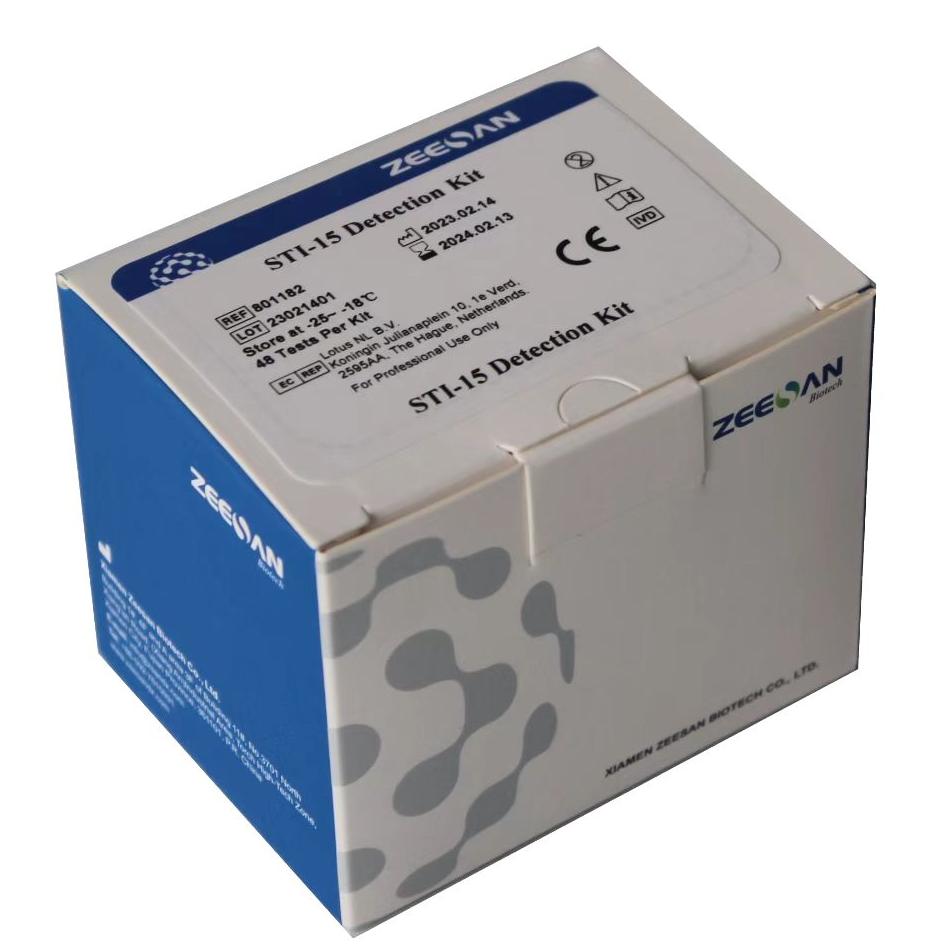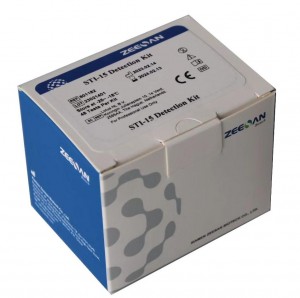
Product
STI-15 Detection Kit
The STI-15 Detection Kit is used to identify 15 commonly seen sexually transmitted infection (STI) pathogens in vaginal or cervical swab, which include:
- Human Cytpmegalovirus (HCMV)
- Herpes Simplex Virus – Ⅰ (HSV-1)
- Herpes Simplex Virus – II (HSV-2)
- Trichomonas vaginalis (TV)
- Ureaplasma urealyticum (UU)
- Haemophilus ducreyi (HD)
- Neisseria gonorrhoeae (NG)
- Treponema pallidum (TP)
- Chlamydia trachomatis (CT)
- Mycoplasma genitalium (MG)
- Ureaplasma parvum (UP)
- Klebsiella granulomatis (KG)
- Varicella-zoster Virus (VZV)
- Mycoplasma hominis (MH)
- Human Herpes Virus- 8 (HHV-8)
Principle
The STI-15 Detection Kit employs a probe-based fluorescence melting curve analysis method. The fundamental process involves adding a probe labeled with a fluorophore and a quencher to the PCR system. During the PCR process, the oligonucleotide sequences complementary to the probe are amplified. After the amplification is complete, a melting curve analysis is performed, with real-time monitoring of the fluorescence value changes. The specific melting temperature (Tm), which results from the hybridization of the PCR product with the fluorescence probe, is calculated by determining the negative derivative of the fluorescence value with respect to temperature. This method enables the identification of 15 different STI pathogens within a single test tube. Additionally, the kit incorporates an internal control (human RNase P), to ensure the reliability of the extraction process.
PCR amplification along with melting curve analysis are both done successively on fully automated PCR analysis system (SLAN-96S, SLAN-96P and SLAN-48P).
Sample Type
Vaginal swab and cervical swab.
CE-IVD Marked
Interested to Know More about Our Solution to Molecular Diagnostics?


